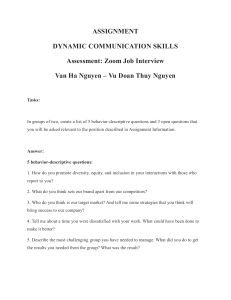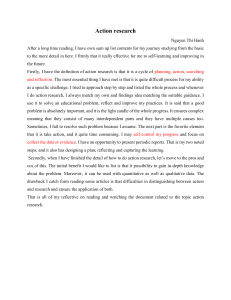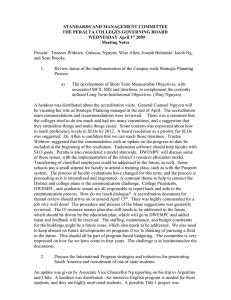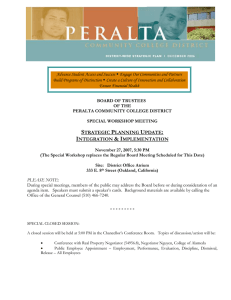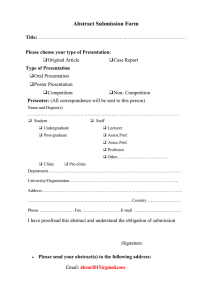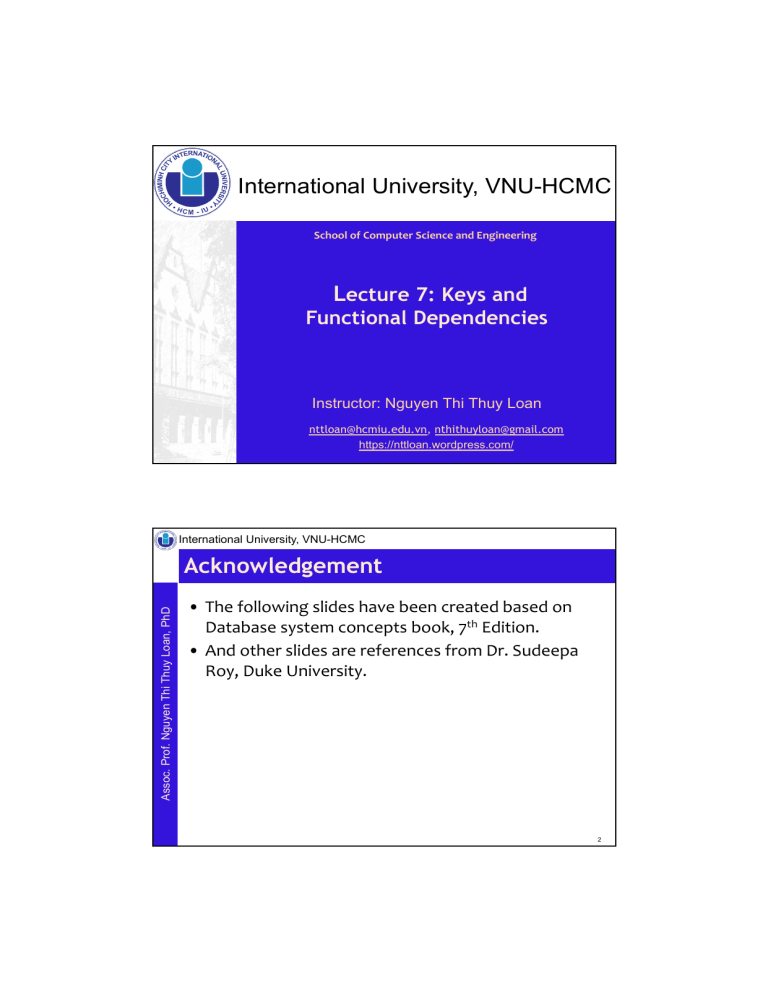
International University, VNU-HCMC
School of Computer Science and Engineering
Lecture 7: Keys and
Functional Dependencies
Instructor: Nguyen Thi Thuy Loan
nttloan@hcmiu.edu.vn, nthithuyloan@gmail.com
https://nttloan.wordpress.com/
International University, VNU-HCMC
Assoc. Prof. Nguyen Thi Thuy Loan, PhD
Acknowledgement
• The following slides have been created based on
Database system concepts book, 7th Edition.
• And other slides are references from Dr. Sudeepa
Roy, Duke University.
2
International University, VNU-HCMC
Assoc. Prof. Nguyen Thi Thuy Loan, PhD
Announcements
• Reminder: Final project report
3
International University, VNU-HCMC
Assoc. Prof. Nguyen Thi Thuy Loan, PhD
Relational Model: review
• ER – Relational Translation
4
International University, VNU-HCMC
Assoc. Prof. Nguyen Thi Thuy Loan, PhD
Today’s topics
• Functional Dependencies
• Keys/ Super keys
• Attribute closure
• Minimal cover
5
International University, VNU-HCMC
Assoc. Prof. Nguyen Thi Thuy Loan, PhD
Motivation
• Why is UserGroup (uid, uname, gid) a bad
design?
o It has redundancy user name is
recorded multiple times, once for each
group that a user belongs to
ü Leads to update, insertion, deletion
anomalies
uid
142
123
857
857
456
456
…
uname
Bart
Milhouse
Lisa
Lisa
Ralph
Ralph
…
gid
dps
gov
abc
gov
abc
gov
…
• Wouldn’t it be nice to have a systematic
approach to detecting and removing
redundancy in designs?
o Dependencies, decompositions, and normal
forms
6
International University, VNU-HCMC
Assoc. Prof. Nguyen Thi Thuy Loan, PhD
Definition of Functional dependency
• A functional dependency (FD) on a relation R is a
statement of the form X ® Y, where X and Y are sets
of attributes in a relation R.
• “If two tuples of R agree on X, then they must also
agree Y”.
• We write this FD formally as
X® Y and say that X functionally determine Y
7
International University, VNU-HCMC
Assoc. Prof. Nguyen Thi Thuy Loan, PhD
Definition of Functional dependency
• DF tells us about any two tuples t and u in the relation R.
If two tuples u and t have the same value in the left side
then they also have the same value in their right side.
• It’s common for the right side of an FD to be a single
attribute.
• A1, A2, …, An ® B1, B2, …,Bm is equivalent to the set
of FD’s
• A1, A2, …, An ® B1
• A1, A2, …, An ® B2
• …
• A1, A2, …, An ® Bm
8
International University, VNU-HCMC
CS3200 – Database Design· · · Spring 2018· · · Derbinsky
Assoc. Prof. Nguyen Thi Thuy Loan, PhD
Functional Dependency (FD)
In a relation r, a set of attributes Y is functionally
dependent upon another set of attributes X (X®Y)
iff… for all pairs of tuples t1 and t2 in r…
if t1[X]=t2[X]…
it MUST be the case that t1[Y]=t2[Y]
9
International University, VNU-HCMC
Assoc. Prof. Nguyen Thi Thuy Loan, PhD
An example
A
a1
a1
a2
a2
B
b1
b1
b2
b2
C
c1
c1
c2
c2
D
d1
d2
d1
d2
What FDs hold in the current state of this relation?
A®D; A,B®C; B,C ®D
10
International University, VNU-HCMC
CS3200 – Database Design· · · Spring 2018· · · Derbinsky
Assoc. Prof. Nguyen Thi Thuy Loan, PhD
FD Example (1)
t1
t2
t3
t4
t5
t6
StudentID
1
2
3
3
2
4
Year
Sophomore
Sophomore
Junior
Junior
Sophomore
Sophomore
Class
COMP355
COMP285
COMP355
COMP285
COMP355
COMP355
Instructor
Wu
Wu
Wu
Wu
Russo
Russo
What FDs hold in the current state of this relation?
StudentID®Year
{StudentID,Class} ®{Instructor}
11
International University, VNU-HCMC
CS3200 – Database Design· · · Spring 2018· · · Derbinsky
Assoc. Prof. Nguyen Thi Thuy Loan, PhD
FD Example (2)
t1
t2
t3
t4
t5
t6
StudentID
1
2
3
3
2
4
Year
Sophomore
Sophomore
Junior
Junior
Sophomore
Sophomore
Class
COMP355
COMP285
COMP355
COMP285
COMP355
COMP355
Instructor
Wu
Wu
Wu
Wu
Russo
Russo
• Every student is classified as either a
{StudentID}® {Year}
Freshman, Sophomore, Junior, or
{StudentID,Class}® {Instructor}
Key(s): {StudentID,Class}
Senior.
• Students can take only a single
section of a class, taught by a single
instructor.
12
International University, VNU-HCMC
CS3200 – Database Design· · · Spring 2018· · · Derbinsky
Assoc. Prof. Nguyen Thi Thuy Loan, PhD
FD Example (3)
t1
t2
t3
t4
t5
t6
StudentID
1
2
3
3
2
4
Year
Sophomore
Sophomore
Junior
Junior
Sophomore
Sophomore
Class
COMP355
COMP285
COMP355
COMP285
COMP355
COMP355
Instructor
Wu
Wu
Wu
Wu
Russo
Russo
{Class} ↛{Year}
{Class} ↛ {StudentID}
{Class} ↛ {Instructor}
{Instructor} ↛ {Class}
{Instructor} ↛ {Year}
{Instructor} ↛ {StudentID}
{StudentID} ↛{Instructor}
{StudentID} ↛ {Class}
{Year} ↛ {StudentID}
{Year} ↛ {Instructor}
{Year} ↛ {Class}
13
International University, VNU-HCMC
Assoc. Prof. Nguyen Thi Thuy Loan, PhD
FD Example (4)
• Example an instance of the relation Movies1
Title
Year
Length
Genre
studioName
starName
Star war
1977
124
SciFi
Fox
Carrie Fisher
Star war
1977
124
SciFi
Fox
Mark Hamill
Star war
1977
124
SciFi
Fox
Harrison Ford
Gone with
the wind
1939
231
Drama
MGM
Vivien Leigh
Wayne’s
World
1992
95
Comedy
Paramount
Dana Carvey
Wayne’s
World
1992
95
Comedy
Paramount
Mike Meyers
The relation
• Movies1 (title, year, length, genre, studioName,
starName)
14
International University, VNU-HCMC
Assoc. Prof. Nguyen Thi Thuy Loan, PhD
FD Example (4)
• The Movies1 is not good design because it holds
information of three different relations: Movies, Studio,
and StarsIn.
15
International University, VNU-HCMC
Assoc. Prof. Nguyen Thi Thuy Loan, PhD
FD Example (4)
• We claim that the following FD holds in this schema
Title, year ® length, genre, studioName (right)
• On the other hand, we observe that the stament:
Title, year ® StarName (wrong, not FD)
Ex: Title, year, length ® genre, StudioName, StarName
16
International University, VNU-HCMC
CS3200 – Database Design· · · Spring 2018· · · Derbinsky
Assoc. Prof. Nguyen Thi Thuy Loan, PhD
FD. Exercise
Consider the following visual depiction of the
functional dependencies of a relational schema.
1. List all FDs in algebraic notation
2. Identify all key(s) of this relation
A
B
C
D
E
17
International University, VNU-HCMC
CS3200 – Database Design· · · Spring 2018· · · Derbinsky
Assoc. Prof. Nguyen Thi Thuy Loan, PhD
Answer
Functional Dependencies
Keys
A ® B
CD ® E
BD ® A
D ® C
DA
DB
A
B
C
D
E
18
International University, VNU-HCMC
Assoc. Prof. Nguyen Thi Thuy Loan, PhD
Keys of Relations
We say a set of one more attributes K is a key for a relation
R if:
• Those attributes functionally determine all other
attributes of the relation. That is, it’s impossible for two
distinct tuples of R to agree on all K.
• No proper subset of K functionally determine all other
attributes of R, i.e., a key must be minimal.
When a key consists of a single attribute A, we often say
that A (rather than {A}) is a key.
19
International University, VNU-HCMC
Assoc. Prof. Nguyen Thi Thuy Loan, PhD
Keys of Relations
A set of attributes 𝐾 is a key for a relation 𝑅 if
• 𝐾 → all (other) attributes of 𝑅
• That is, 𝐾 is a “super key”
• No proper subset of 𝐾 satisfies the above condition
• That is, 𝐾 is minimal
20
International University, VNU-HCMC
Assoc. Prof. Nguyen Thi Thuy Loan, PhD
Keys of Relations
Ex: Attributes {title, year, starName} form a key for the
relation Movies1.
• Suppose two tuples agree on title these three
attributes: title, year, and starName. Because they agree
on title and year, they must agree on other attributes
length, genre, and studioName.
21
International University, VNU-HCMC
Assoc. Prof. Nguyen Thi Thuy Loan, PhD
Keys of Relations
• Argue that no proper subset of {title, year, starName}
functionally determines all other attributes. Why title
and year do not determine starName, because many
movies have more than one star. Thus {title, year} is not
a key, similar to {year, starName}, and {title, starName}
22
International University, VNU-HCMC
Assoc. Prof. Nguyen Thi Thuy Loan, PhD
Keys of Relations
• Sometimes a relation has more than one key. If so,
it’s common to designate one of the keys as the
primary key (PK).
• In commercial database systems, the choice of PK
can influence some implementation issues such as
how the relation is stored on disk. However, the
theory of FD’s give no special role to PK.
23
International University, VNU-HCMC
Assoc. Prof. Nguyen Thi Thuy Loan, PhD
Determining all keys
• Source attributes (𝑆𝐴): Those that are appearing only in
the left side of the functional dependency (FD), or the
ones that are not part of any FDs.
• Intermediate attributes (𝐼𝐴): Those that are the ones
appearing on both sides of the FDs.
• Target attributes (𝑇𝐴): Those that are only appearing on
the right side of the FDs.
24
International University, VNU-HCMC
Assoc. Prof. Nguyen Thi Thuy Loan, PhD
Algorithm: Determining all keys
Step 1: Determine source attributes (SA), Intermediate
attributes (IA).
Step 2: If IA = Æ then
K = SA is the only key.
Return K;
Step 3: Determine all subsets of IA.
Step 4: Determine the super keys Si from ∀𝑋! ⊂ 𝐼𝐴.
IF 𝑆𝐴 ∪ 𝑋! " = 𝑅 " THEN
𝑆! = 𝑆𝐴 ∪ 𝑋!
Step 5: Return all minimal 𝑆! .
25
International University, VNU-HCMC
Assoc. Prof. Nguyen Thi Thuy Loan, PhD
Examples: Determining all keys
1. Consider a relation with schema R(A,B,C) and FD’s
F ={AB ®C, C ®A}
What are all the keys of R?
2. Consider a relation with schema R(A,B,C,D,E,G)
and FD’s F ={E ®C, A ®D, AB ®E, DG ®B}
What are all the keys of R?
26
International University, VNU-HCMC
Assoc. Prof. Nguyen Thi Thuy Loan, PhD
Super keys
• A set of attributes that contains a key is called a
super key, short form “superset of a key”. Thus,
every key is a super key.
• Every super key satisfies the first condition of a key:
it functionally determines all other attributes of the
relation. It does not need to satisfy minimality.
27
International University, VNU-HCMC
Assoc. Prof. Nguyen Thi Thuy Loan, PhD
Super keys
• Ex: In the relation above, there are many super keys.
Not only is the key
• {title, year, starName}: a key
• {title, year, starName, length}
• {title, year, starName, studioName}
are super keys
28
International University, VNU-HCMC
Assoc. Prof. Nguyen Thi Thuy Loan, PhD
Exercise
• Suppose R is a relation with attributes A1, A2, ..An. As
a function of n, tell how many super keys R has, if:
1. The only key is A1
2. The only keys are A1 and A2
3. The only keys are {A1, A2} and {A3, A4}
4. The only keys are {A1, A2} and {A1, A3}
29
International University, VNU-HCMC
Assoc. Prof. Nguyen Thi Thuy Loan, PhD
Answer
1. The only key is A1: 2n-1
2. The only keys are A1 and A2: 3*2n-2
3. The only keys are {A1, A2} and {A3, A4}:
7*2n-4
4. The only keys are {A1, A2} and {A1, A3}:
3*2n-3
30
International University, VNU-HCMC
Assoc. Prof. Nguyen Thi Thuy Loan, PhD
Reasoning with FD’s
Given a relation 𝑅 and a set of FD’s ℱ
• Does another FD follow from ℱ?
• Are some of the FD’s in ℱ redundant (i.e., they
follow from the others)?
• Is 𝐾 a key of 𝑅?
• What are all the keys of 𝑅?
31
International University, VNU-HCMC
Assoc. Prof. Nguyen Thi Thuy Loan, PhD
Rules of ℱD’s
• Armstrong’s axioms
• Reflexivity: If 𝑌 ⊆ 𝑋, then 𝑋 → 𝑌
• Augmentation: If 𝑋 → 𝑌, then 𝑋𝑍 → 𝑌𝑍 for any 𝑍
• Transitivity: If 𝑋 → 𝑌 and 𝑌 → 𝑍, then 𝑋 → 𝑍
• Rules derived from axioms
• Splitting: If 𝑋 → 𝑌𝑍, then 𝑋 → 𝑌 and 𝑋 → 𝑍
• Combining: If 𝑋 → 𝑌 and 𝑋 → 𝑍, then 𝑋 → 𝑌𝑍
ℱ Using these rules, you can prove or disprove an FD given
a set of ℱDs
32
International University, VNU-HCMC
Assoc. Prof. Nguyen Thi Thuy Loan, PhD
Example
• The set of FD’s:
Title, year ® length
Title, year ® genre
Title, year ® studioName
is equivalent to the singe FD
Title, year ® length, genre, studioName
33
International University, VNU-HCMC
Assoc. Prof. Nguyen Thi Thuy Loan, PhD
Example
• Consider one of the FD’s such as:
Title, year ® length
If we try to split the left side into
Title, year ® length
Year ® length
Then we get false FD’s. That is, title does not
functionally determine length, since there can be
several movies with the same title.
34
International University, VNU-HCMC
Assoc. Prof. Nguyen Thi Thuy Loan, PhD
Trivial Functional Dependencies
• They are the FD’s X ® Y such that Y Í X.
That is, a trivial FD has a right side that is a subset of
its left side.
• For example:
Title, year ® title or title ® title, are trivial FD’s
35
International University, VNU-HCMC
Assoc. Prof. Nguyen Thi Thuy Loan, PhD
Equivalence rules
• Given FD X ® Y is equivalent to X ® Z
where the Z is a subset of Y, that are not belong to
X, such that Z Ì Y.
For example:
Title, year ® title, genre; equivalent to
Title, year ® genre
36
International University, VNU-HCMC
Assoc. Prof. Nguyen Thi Thuy Loan, PhD
Attribute closure
• Given 𝑅, a set of FD’s ℱ that hold in 𝑅, and a set of
attributes X in 𝑅:
• The closure of X (denote X+) with respect to ℱ is the
set of all attributes {𝐴1, 𝐴2, …} functionally
determined by X (that is, X → 𝐴1𝐴2 …)
37
International University, VNU-HCMC
Assoc. Prof. Nguyen Thi Thuy Loan, PhD
Algorithm: Attribute closure
• Input: A set of attributes X and set of FD’s of ℱ
• Output: The closure X+
1. Start with closure = X
2. If Z ®Y is in ℱ and Z is already in the closure, then also add
Y to the closure
3. Repeat until no new attributes can be added.
38
International University, VNU-HCMC
Assoc. Prof. Nguyen Thi Thuy Loan, PhD
Algorithm: Attribute closure
Input: R, ℱ, X Í R+
Output: X+
Step 1: Set X+ = X
Step 2:
temp = X+
"f
Z ®Y Î ℱ
if(Z Í X+)
X+ = X+ È Y
ℱ=ℱ–f
Step 3: if (X+=Temp)
“X+ is a result” stop
else
Return step 2
39
International University, VNU-HCMC
Assoc. Prof. Nguyen Thi Thuy Loan, PhD
Examples
• Let us consider a relation R(A,B,C,D,E,G) and FD’s
ℱ ={AB ® C, BC ® AD, D ® E, CG ® B} .
What is {A,B}+?
• X ={A,B}
• Next, X = {A,B,C} based on AB ® C
• X = {A,B,C,D} based on BC ® D
• X = {A,B,C,D,E} based on D ® E and no more changes to X are
possible.
• Thus, {A,B}+ = {A,B,C,D,E}
40
International University, VNU-HCMC
Assoc. Prof. Nguyen Thi Thuy Loan, PhD
Example
• Let us consider a relation R(A,B,C,D,E,G) and FD’s
ℱ = {AB ® C, BC ® AD, D ® E, CG ® B} .
Suppose we wish to test whether AB ® D follows from
these FD’s.
• We computer {A,B}+ = {A,B,C,D,E}. Since D is a member
of the closure, we conclude that AB ® D does follow.
• However, D ® A does not follow.
41
International University, VNU-HCMC
Assoc. Prof. Nguyen Thi Thuy Loan, PhD
Exercises
1. Let us consider a relation R(A,B,C,D,E,G) and FD’s
ℱ ={AB ® D, AC ® BD, D ® G, CG ®A} .
What is {A,C}+, {B,D}+?
2. Let us consider a relation R(A,B,C,D,E,G) and FD’s
ℱ ={AB ® C, BC ® D, D ® EG, BE ®C}
Suppose we wish to test whether AB ® EG follows from
these FD’s.
42
International University, VNU-HCMC
Assoc. Prof. Nguyen Thi Thuy Loan, PhD
Minimal cover
• If we are given a set of FD’s F, then any set of FD’s
equivalent to F is said to be a basic for F. A minimal basic
for a relation is a minimal cover B that satisfies three
conditions.
1. If for any FD in B we remove one or more attributes
from the left side of FD, the result is no longer a
minimal cover.
2. All the FD’s in B have singleton right sides.
3. If any FD is removed from B, the result is no longer a
minimal cover
43
International University, VNU-HCMC
Assoc. Prof. Nguyen Thi Thuy Loan, PhD
Example
• Ex: Consider a relation R(A,B,C) and FD’s
F= {A® B,B ®A, B ®C, C ®A, C ®B, AB ®C,
AC ®B, BC ®A}.
• Relation R and its FD’s have several minimal cover
such as:
{A® B, B ®A, B ®C, C ®B} and
{A® B, B ®C, C ®A}
44
International University, VNU-HCMC
Assoc. Prof. Nguyen Thi Thuy Loan, PhD
Example
Given R(A,B,C,D) and F = {A → BC, B → C, AB → D}.
Find minimal cover of F (set of functional dependencies).
45
International University, VNU-HCMC
Assoc. Prof. Nguyen Thi Thuy Loan, PhD
HW
Given R(A,B,C,D) and F = {AB → CD, B → C, C → D}.
Find minimal cover of F (set of functional dependencies).
46
International University, VNU-HCMC
Assoc. Prof. Nguyen Thi Thuy Loan, PhD
Projecting a set of FD’s
• Given R(A,B,C,D) has FD’s F = {A®B, B ®C, C ®D}.
Suppose also that we wish to project out the attribute B,
leaving a relation R1(A,C,D).
• Find F1?
47
International University, VNU-HCMC
Assoc. Prof. Nguyen Thi Thuy Loan, PhD
Algorithm: Projecting a set of FD’s
• Input: Two relations R, R1, computed by the projection
R1 = pL(R). Also, a set of FD’s F that hold in R.
• Output: The set of FD’s that hold in R1.
1. Let F1 be the eventual output set of FD’s. Initially, F1 is
empty
2. For each set of attributes X that is a subset of the attributes
of R1, compute X+. This computation is performed with
respect to the set of FD’s F, and may involve attributes that
are in the schema of R but not R1. Add to F1 all nontrivial
FD’s X ®A such that A both in X+ and an attribute of R1.
48
International University, VNU-HCMC
Assoc. Prof. Nguyen Thi Thuy Loan, PhD
Algorithm: Projecting a set of FD’s
3. Now, F1 is a basic for the FD’s that hold in R1, but may not be
a minimal cover. We may construct a minimal basic by
modifying F1 as follows:
a. If there is an FD f1 in F1 that follows from the other FD’s in
F1, remove f1 from F1.
b. Let Y ® B be an FD in F1, with at least two attributes in Y,
and let Z be Y with one of its attributes removed. If Z ®B
follows from the FD’s in F1 (including Y ®B), then replace
Y ® B by Z ®B.
c. Repeat the above steps in all possible ways until no
more changes to F1 can be made.
49
International University, VNU-HCMC
Assoc. Prof. Nguyen Thi Thuy Loan, PhD
Example
• Given R(A,B,C,D) has FD’s F={A®B, B ®C, C ®D}.
Suppose also that we wish to project out the attribute B,
leaving a relation R1(A,C,D). Find F1?
Answer:
• In principle, to find the FD’s for R1, we need to take the
closure of all eight subsets of {A,C,D}, using the full set
of FD’s including those involving B.
50
International University, VNU-HCMC
Assoc. Prof. Nguyen Thi Thuy Loan, PhD
Example
• Subset of {A,C,D}: Æ, A,C,D,AC,AD,CD, ACD.
• Closures of all subsets: {Æ}+= Æ, {A}+ = {A,B,C,D}, {C}+ =
{C,D}, {D}+ = {D}, {AC}+ = {A,B,C,D}, {CD}+ = {C,D}, {ACD}+ =
{A,B,C,D}.
• F={A®B, B ®C, C ®D}
• F1+ = PR1(F) = {A®C, A®D, C®D}. We can observe that
A®D follows from the other two by transitivity.
Therefore, a minimal cover for the FD’s of R1 is
F1 = {A®C, C®D}.
51
International University, VNU-HCMC
Assoc. Prof. Nguyen Thi Thuy Loan, PhD
Exercises
1. Consider a relation with schema R(A,B,C,D) and FD’s
F ={AB ®C, C ®D, D ®A}
a. What are all the nontrivial FD’s that follow from the given
FD’s? You should restrict yourself to FD’s with single
attribute on the right side.
b. What are all the keys of R?
c. What are all the super keys for R that are not keys?
52
International University, VNU-HCMC
Assoc. Prof. Nguyen Thi Thuy Loan, PhD
Exercises
2. Consider a relation with schema R(A,B,C,D) and FD’s
F ={AB ®C, BC ®D, CD ®A, AD ®B}
a. What are all the nontrivial FD’s that follow from the given
FD’s? You should restrict yourself to FD’s with single
attribute on the right side (Restrict to one attribute on
right side).
b. What are all the keys of R?
c. What are all the super keys for R that are not keys?
53
International University, VNU-HCMC
Assoc. Prof. Nguyen Thi Thuy Loan, PhD
Exercises
3. Suppose we have relation R(A,B,C,D,E), with some set of
FD’s, F ={AB ®DE, C ®E, D ®C, E ®A} and we wish to
project those FD’s onto relation S(A,B,C). Find F1?
54
International University, VNU-HCMC
Assoc. Prof. Nguyen Thi Thuy Loan, PhD
Exercises
4. Suppose we have relation R(A,B,C,D,E), with some set of
FD’s, F ={AB ®D, AC®E, BC ®D, D ®A, E ® B} and we wish
to project those FD’s onto relation S(A,B,C). Find F1?
55
Assoc. Prof. Nguyen Thi Thuy Loan, PhD
International University, VNU-HCMC
Thank you for your attention!
56
